Your dog’s calorie needs are essential in so many ways. Specifically, it is important for the sake of maintaining their weight, health, and overall well-being. It’s all interconnected with one another. Whether your dog is a young puppy, a senior that is not moving around as much, or a highly active breed, you’ll want to be sure you are feeding them the adequate amount of calories that will ensure a happy and healthy life for the long term.
We will go over this detailed guide on how many calories your dog should eat. There are plenty of factors that will come into play here - to which we will discuss each one putting pet parents like you at ease on what to do. Let’s get right to it.
Factors That Influence a Dog’s Caloric Needs
Asking the question “how many calories should my dog eat” is justifiable for any pet owner. While the answer we will give you is a bit lengthy, this guide will break it down in the best details. Let’s start off with the factors that will play a role in their caloric needs:
Breed and Size
First, the breed and size of the dog should be taken into account. It’s obvious that a Great Dane will need more calories compared to a Chihuahua. The main reason is the body mass comparison between the two breeds.
Age and Life Stage
Each dog has an age and life stage that requires the recommended amount of calories. As they age, so do their requirements. Therefore, it is important to consider the following:
- Puppies will need more calories per pound of body weight compared to the adult versions of their breed. Their rapid growth will need to be accommodated (especially if they are large breed dogs that will grow much larger before they reach the first year of age).
- Adult dogs will require a maintenance diet that is tailored to their level of activity. Here’s where things get tricky. Active breeds like Australian Shepherds will likely require more calories compared to less active breeds like Basset Hounds or Bulldogs. The activity levels of your dog should also be noted. Don’t give an active dog an amount of calories fit for a sedentary dog (and vice versa).
- Senior dogs will experience a slowdown of their metabolism as they get older. For this reason, they will need fewer calories.
Activity Levels
The activity level of your dog should be taken into account. Of course, highly active breeds will burn more calories and therefore require a higher intake. On the other hand, less active breeds will require fewer calories. Any more and you can risk weight gain in your dog, which will of course lead to numerous short-term and long-term health issues, further reducing their quality of life.
Health Conditions
If your dog experiences chronic health issues such as diabetes or thyroid disorders, this can make things tricky for their caloric requirements. A dog that is recovering from surgery or illness may need their caloric needs adjusted for the moment. This is where seeking advice from a veterinarian will be ideal. Follow the necessary instructions based on your dog’s current health situation and adjust according to the veterinarian's recommendations.
How to Calculate Your Dog’s Daily Caloric Needs
The formula we will show you will help you determine how many calories your dog should eat. We will be using what is known as the Resting Energy Requirement (RER) formula. This consists of the following:
RER = 70 x (Body weight in kg) ^ 0.75
After you calculate the RER, you will need to multiply it by a factor based on aspects like your dog’s activity level and life stage. Here is the guide that you’ll want to follow:
|
Dog age/activity level |
RER x |
|
Puppies < 4mos |
3 |
|
Puppies > 4 mos |
2 |
|
Adults (neutered) |
1.6 |
|
Adults (intact) |
1.8 |
|
Active/working |
2-5 |
|
Senior |
1.4 |
What Is the Ideal Caloric Intake for Different Sized Dogs?
Of course, it is important to also take into account the body weight of your dog. Below is a table on the body weight of your dog and the amount of maintenance calories needed:
|
Dog weight in pounds |
Calories Per Day (Maintenance energy requirements) |
|
5 lbs |
200-275 cal |
|
10 lbs |
300-400 cal |
|
20 lbs |
500-650 cal |
|
50 lbs |
1000-1300 cal |
|
70 lbs |
1300-1600 cal |
|
100 lbs |
1600-2000 cal |
These will be variant depending on factors like metabolic levels, activity, and specific dietary needs. Round your dog’s body weight to the nearest recommendation with some adjustments. For example, if your dog weighs around 30 pounds, consider 600 calories at your starting point and adjust if necessary. If they are around 45-49 pounds, keep it to no more than 1000 calories, but don’t go any less than 850 calories.
There may be situations where you can increase the caloric intake. For example, if you have a skinny dog that needs to gain weight, you could increase the amount of calories that may be necessary to help the dog reach an ideal weight.
Signs Your Dog Is Eating the Right Amount of Calories
It is important to monitor your dog’s weight and their overall health. This will give you a glimpse at whether or not they are getting the right number of calories. Here are the signs that your dog has a well-balanced diet that follows recommended nutritional requirements:
- A healthy weight with a visible waistline
- Energy levels are steady
- Shiny coat and healthy-looking skin
- Normal stool consistency and digestion
If you do not notice any of these signs, that’s when you will need to adjust your dog’s caloric intake accordingly. That’s why they might ask “how many calories should my dog eat”. Be vigilant with how much you feed your dog. When prepping their food, make plans to weigh it accordingly and note the calorie count in terms of portions.
For example, if you are feeding a smaller breed, weigh their food on a lightweight dish like a paper plate using a small scale. This will not only give you an opportunity to adjust your dog’s food accordingly, but also help you determine if you are giving them the right amount according to their caloric and dietary needs.
Adjusting Calories for Weight Management
If you have a dog that is overweight, it is important to make sure you make plans to help them lose weight. Reducing their caloric intake and increasing their exercise activity will be the obvious courses of action to take. Let’s provide you with ideas on how to approach your dog’s weight loss progress:
- Daily walks: Take your dog on a walk for a minimum duration of 30 to 60 minutes. This will not only help them maintain their ideal weight but can also give them the added benefit of an improved, stronger cardiovascular system.
- Consider interactive play: Activities like tug of war, fetch, or agility training will provide your dog with both physical and mental benefits. They will feel more active and stimulated than ever over time. Plus, they can hit their target weights with ease.
- Swimming: This is a good option for dogs who enjoy being in the water. Swimming is low impact and will be ideal for burning calories. The best part: it is an activity that won’t place added stress on your dog’s joints.
- Puzzle feeders: A puzzle feeder or slow-feeding bowls will be excellent for a dog that needs to be on a weight management plan. These feeders are specifically designed to prevent overeating. This flips the script on mealtime making it more fun and engaging rather than “just another chow session”.
- Strength training: Consider breed appropriate strength training activities. For example, hiking or weighted vest walks will be suitable for larger breeds. These will not only help burn calories but also help them build muscle.
- Regular weigh-ins: Every few weeks, weigh your dog to help track overall progress and adjust their diet and exercise accordingly until they reach their ideal weight. The best way to weigh your dog is by using a pet scale (for larger breeds). If you have a small breed, you can use a simple bathroom scale by holding your dog and standing on the scale yourself. Subtract the combined weight from your own weight to get an estimate. Continue to follow the appropriate feeding schedule.
Choosing the Right Food for Your Dog’s Caloric Needs
Choosing the right foods will be important since not all are created equal. The reason for this is due to the calorie density that will vary between brands and types. Consider a high-quality dog food preferably with natural ingredients over the artificial ingredients and filters that may be a detriment to your dog’s overall nutrition.
Also, keep in mind that Under the Weather has plenty of items that will also help with your dog’s nutritional needs. Especially our Bland Diet line that will be useful for not only their calorie needs, but also any health issues that they may be currently experiencing like an upset stomach. It can also be great for gut health as well because it contains probiotics.
Final Thoughts
The amount of calories your dog should eat daily can be determined by this guide. Use the examples we’ve listed above to get a specific amount of calories that they’ll need. From there, it all comes down to the food you choose for them. Be sure to weigh their food accordingly to ensure they are getting the right amount since the portion sizes might be different even if the caloric content is the same.
If you are looking for other additional foods or supplements for your dog and their health, Under the Weather has what you need. Make sure you check out Under the Weather’s line of bland diet foods and other supplements today to make sure your dog is healthy for the long-term.




